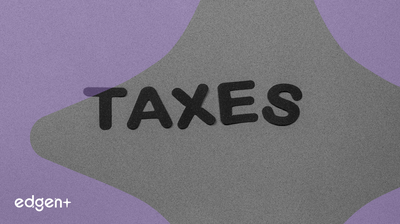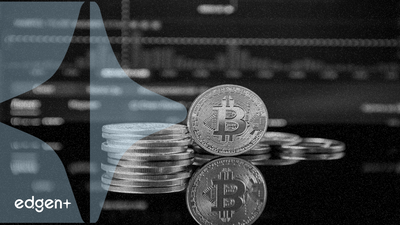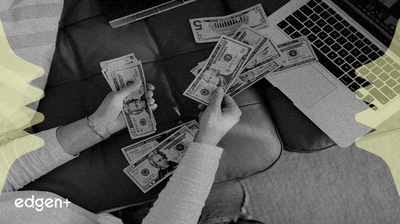Related News

Dallas Fed's Logan Signals Difficulty in Supporting December Rate Cut Amid Persistent Inflation Concerns
## Executive Summary Dallas Federal Reserve President Lorie Logan has signaled significant difficulty in supporting an interest rate cut in December, citing ongoing concerns about high inflation and the pace of labor market cooling. This stance, from a voting member of the Federal Open Market Committee (**FOMC**), introduces caution into market expectations that had previously priced in more aggressive rate reductions. ## The Event in Detail Ms. Logan explicitly stated that given current economic conditions, it would be “difficult” to endorse another December rate cut. Her position is notable due to her role as a voting member on the **FOMC**, reflecting a growing caution within the Federal Reserve. This contrasts with earlier market sentiment which had anticipated more aggressive rate cuts. Logan emphasized her intent to closely monitor incoming data and financial conditions before any decisions are made. The Fed's hesitation is rooted in several critical macroeconomic indicators, including persistent inflation trends, price stability metrics, prevailing labor market conditions, and global economic developments. ## Market Implications The Federal Reserve's cautious approach to interest rate adjustments, driven by inflation and employment data, has direct implications for risk assets, including cryptocurrencies. Traditionally, tighter monetary policy tends to decrease investment in such assets. Despite this, persistent global inflation continues to drive investor interest in cryptocurrencies as a potential hedge against the erosion of purchasing power. A **MEXC** survey from Q1-Q2 2025 indicated that 46% of global crypto users view digital assets as an inflation hedge. This sentiment emerged even as Bitcoin experienced a 3.03% drop over 24 hours in August 2025, falling to $117,000 after briefly topping $122,000, following gloomy inflation data. Q3 2025 witnessed a significant surge in crypto activity, with average daily trading volume jumping by 43.8% to $155.0 billion, underscoring continued market engagement despite broader economic uncertainties. ## Expert Commentary Most analysts anticipate the Federal Reserve will delay the first interest rate cut until at least May 2025, primarily due to core inflation remaining at 3.1%. While **Bitcoin** has stabilized near $82,700 in some periods, experts caution about potential crypto market volatility, citing external risks such as tariffs that could fuel future inflationary pressures. Conversely, some predictions suggest **BTC** could reach $175,000 in 2025, with Blockware Solutions forecasting a potential price of $400,000 per **BTC**. The downside risk is projected to find strong support around the $70,000 mark. Furthermore, **Ethereum** (**ETH**) is predicted to reach $5,400 by year-end, driven by a potential

Cardone Capital Launches Hybrid Real Estate-Bitcoin Fund with $235 Million Property
## Executive Summary Cardone Capital has initiated a hybrid investment fund, integrating a $235 million multifamily property with a $100 million Bitcoin allocation. The strategy involves reinvesting the property's rental income, estimated at $10 million annually, into further Bitcoin acquisitions. The firm aims for a public listing, framing the fund as a "digital asset treasury" backed by tangible assets and consistent cash flow. ## The Event in Detail Real estate investor Grant Cardone's firm, Cardone Capital, has expanded its multifamily housing fund strategy by pairing traditional commercial property with Bitcoin allocations. The company recently launched its fifth commercial multifamily investment property, a 366-unit complex purchased for approximately $235 million. A significant portion of this fund, $100 million, has been specifically allocated to Bitcoin (BTC). The objective is to combine the low volatility, tax benefits, income generation, and stable value of real estate with the growth potential inherent in Bitcoin. ## Financial Mechanics and Strategy The core financial mechanism of this hybrid fund involves utilizing the net operating income from the real estate asset to continuously acquire more Bitcoin. The property is projected to generate approximately $10 million in net operating income annually, which will be directed toward increasing the fund's Bitcoin holdings. This approach aims to create a continuous buying mechanism for BTC, leveraging the stable cash flow from real estate to mitigate Bitcoin's inherent volatility while capitalizing on its long-term appreciation potential. Strategically, Cardone Capital intends to take this fund public, converting it into shares that trade as a public company. Grant Cardone stated that this public entity would function similarly to "digital asset treasuries" but with the distinction of possessing "a real product, a real asset, real income, real tenants, real customers," and "free cash flow." This differentiates the model from pure digital asset holding companies by grounding it in a revenue-generating operational business. ## Market Implications This innovative hybrid fund model from Cardone Capital could establish a new precedent for asset allocation, potentially drawing interest from a wider investor base in both traditional real estate and cryptocurrency markets. The integration of consistent real estate income for ongoing Bitcoin accumulation provides a sustained demand mechanism for BTC. Should this model demonstrate success, it may encourage traditional Real Estate Investment Trusts (REITs) and other institutional investors to explore similar strategies, diversifying their portfolios with digital assets. The potential public listing of such a blended entity could further expand pathways for institutional participation in the broader Web3 ecosystem, bridging conventional finance with digital assets. The current market environment, characterized by rising institutional investment and a cautiously optimistic outlook in late 2025, with Bitcoin trading above $124,000, suggests a receptive landscape for these novel financial products. ## Broader Context The Cardone Capital initiative aligns with an evolving regulatory and investment landscape for digital assets. Regulatory advancements, such as the SEC's "Project Crypto" in July 2025, have streamlined the approval process for crypto ETFs, accelerating institutional adoption. Notably, BlackRock's iShares Bitcoin Trust (IBIT) accumulated over $52.3 billion in assets within its first year, marking it as a highly successful ETF launch. Such developments underscore a growing appetite for accessible digital asset exposure and a trend toward integrating cryptocurrencies into established financial frameworks. The increasing sophistication of financial products, coupled with significant institutional inflows, signals a maturing market where hybrid models like Cardone Capital's can find traction and potentially drive further innovation.

Tether Explores €1 Billion Investment in Neura Robotics, Signaling Strategic Diversification
## Executive Summary Tether, the issuer of the **USDT** stablecoin, is reportedly in advanced discussions to invest approximately €1 billion in the German robotics firm **Neura Robotics**. This potential funding round would value **Neura Robotics** between €8 billion and €10 billion. The move signals a significant strategic pivot for **Tether**, as it continues to diversify its investment portfolio beyond its core stablecoin operations and into emerging technology sectors such as artificial intelligence and robotics. This initiative is supported by Tether's robust financial performance, which generated over $10 billion in net profit during the first three quarters of 2025. ## The Event in Detail The proposed investment involves **Tether** leading a funding round in **Neura Robotics**, a company focused on the development of cognitive humanoid robots for practical, real-world applications, including industrial use. This investment follows Neura Robotics' previous funding success in January, where it raised nearly $140 million from investors including BlueCrest, C4 Ventures, Lingotto, and Volvo Cars Tech Fund. For **Tether**, this engagement aligns with its stated strategy over the past year to diversify into AI infrastructure, robotics, and other real-world technology ventures. Its "Hadron by Tether" platform has already established agreements with KraneShares and Bitfinex Securities to promote the adoption of tokenized securities. ## Market Implications This potential investment by **Tether** in **Neura Robotics** underscores a significant evolution in the stablecoin issuer's strategic direction. It demonstrates a clear intent to allocate substantial capital, derived from its profitable stablecoin operations, into high-growth technology sectors outside of the traditional cryptocurrency ecosystem. With net profits exceeding $10 billion in the first three quarters of 2025 and substantial financial reserves, including $6.8 billion in excess reserves and approximately $135 billion in U.S. Treasuries, **Tether** possesses the financial capacity to pursue such large-scale diversification. This move could influence broader market sentiment by legitimizing the deployment of crypto-generated profits into innovation across other industries and may encourage other Web3 entities to explore similar corporate diversification strategies. ## Expert Commentary Market observers note that **Tether's** investment in **Neura Robotics** aligns with its ambition to become a prominent player in the broader technology landscape. This strategic deployment of capital reflects the growing financial power of stablecoin issuers and their increasing integration into the global economy. The investment highlights a trend where crypto-native companies, leveraging their substantial financial resources, are actively seeking to participate in and shape technological advancements beyond their foundational blockchain activities. This signifies a maturation of the cryptocurrency sector, moving beyond purely digital asset-focused ventures to impact tangible technological innovation. ## Broader Context **Tether's** foray into robotics is part of a broader diversification strategy that has seen the company expand its interests significantly. Previously, **Tether** has invested in **Bitcoin** mining operations across various countries and has extended approximately $1.5 billion in credit to the commodities sector, particularly for energy financing. The company launched "Tether Ventures" in July, an initiative that utilizes **Tether's** balance sheet to back technology startups focused on decentralization, payments, AI, and energy, with investments in over 120 companies to date. This approach differs from models like MicroStrategy's, which primarily focuses on accumulating **Bitcoin** as a treasury asset. Instead, **Tether** is leveraging its considerable profitability and reserves, which include approximately $9.9 billion in **Bitcoin**, to acquire stakes in and fund other technology companies, thereby expanding its influence and operational footprint across multiple strategic sectors, including securing access to a 20,000-GPU compute network for its AI research environment.
